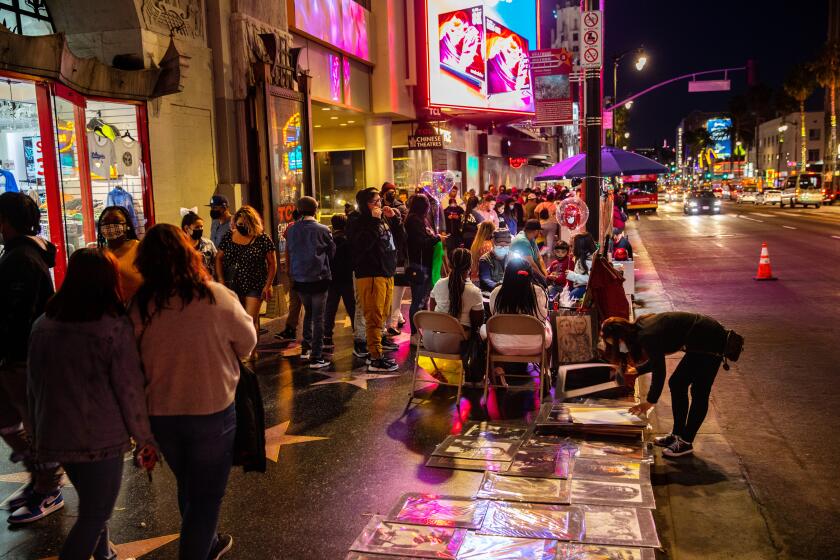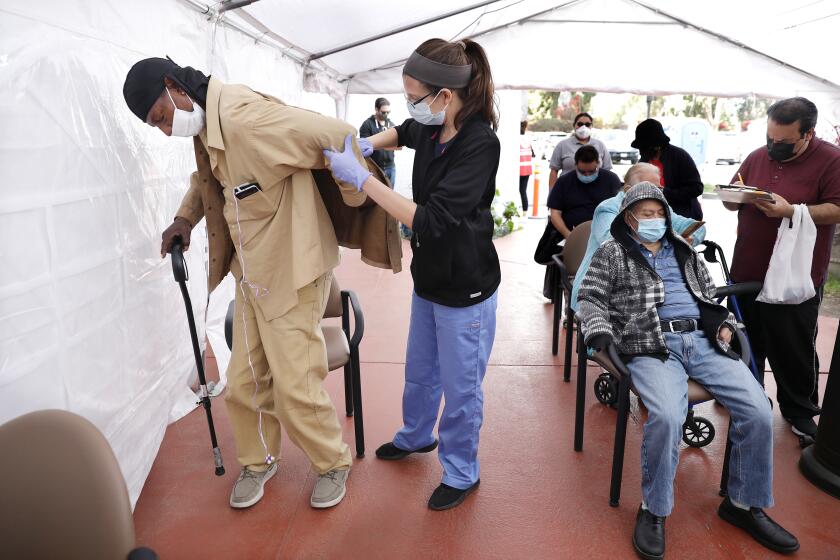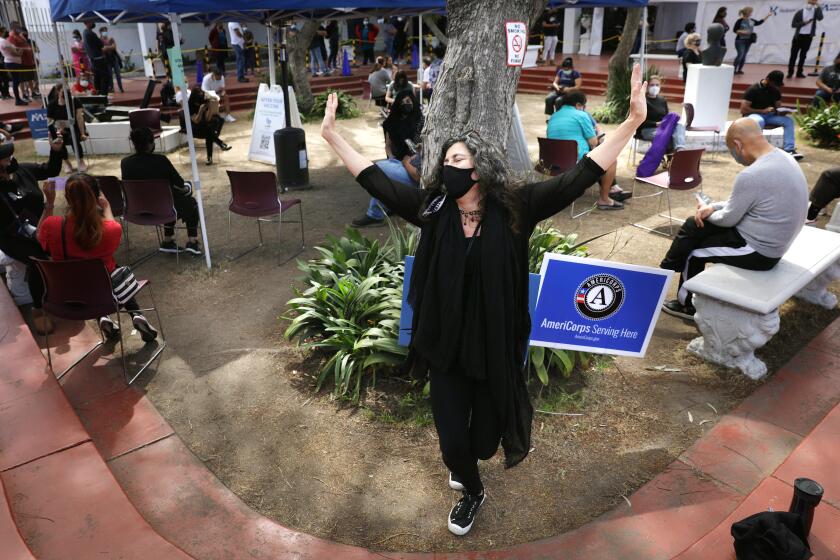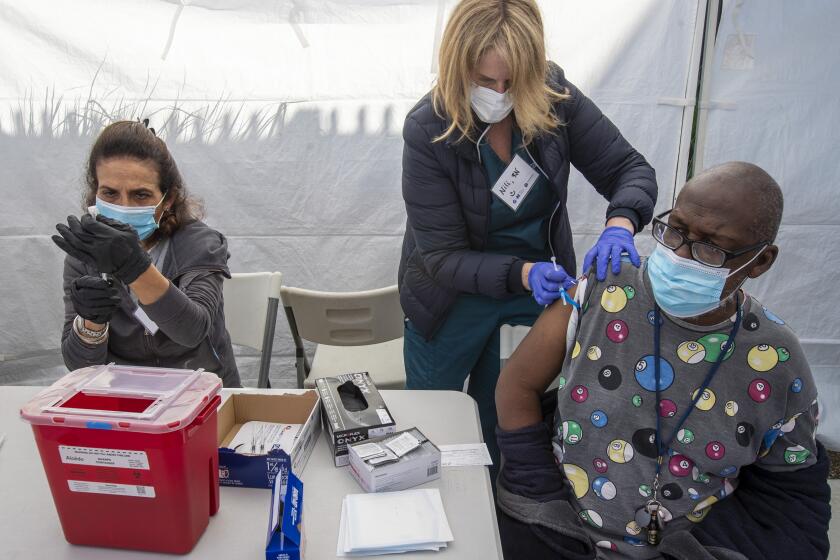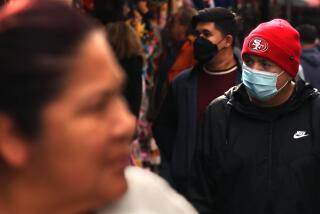California isn’t seeing COVID-19 case rates like New York and Florida. Can we keep it up?
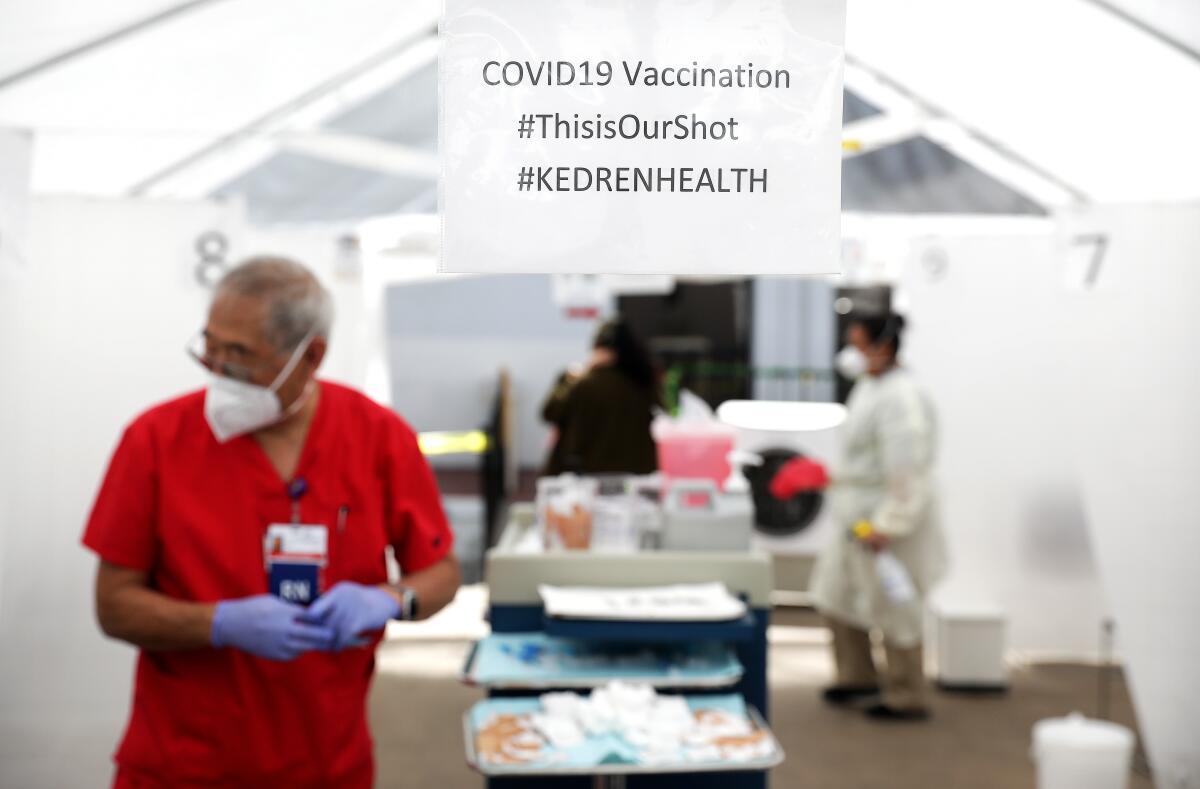
- Share via
Despite rising coronavirus case rates in other parts of the nation, California is continuing to see its metrics trend downward.
At least for now.
Even as the state’s numbers remain comparatively positive, officials are urging caution — saying California can ill afford to see its progress reverse so soon after emerging from its own horrific fall and winter surge.
Los Angeles County Public Health Director Barbara Ferrer said the high number of cases elsewhere should be of particular concern because what happens elsewhere in the country will likely carry consequences for California.
And with much of the state further unlocking long-shuttered businesses and other activities, the stakes remain high — and the danger of increased transmission remains real.
The two counties have now banked one week’s worth of the metrics necessary to progress into the orange tier, which would mean more businesses could open.
California’s trends
Over the last week, the state has reported an average of 2,766 new coronavirus cases per day, a 35% decrease from two weeks ago, data compiled by The Times show.
Statewide, 2,586 COVID-19 patients were hospitalized Monday; 635 were in intensive care. Both figures have returned to levels not seen since the beginning of California’s last surge.
The number of newly reported COVID-19 deaths also continues to decline but is not yet down to pre-surge levels. An average of 183 Californians died from the disease every day during the last week, and the state’s total death toll has surpassed 57,200.
As of Tuesday, California’s seven-day case rate per 100,000 people was among the lowest in the nation, at 46.8, according to the CDC. The only states with better rates were Arizona, 46.1, Oregon, 45.5, and Hawaii, 37.
Case rates over the same period were 319.2 in New Jersey, 311.1 in New York City, 222.1 in the rest of New York state, 162.8 in Pennsylvania, 143.9 in Florida, and 91.6 in Texas.
The most recent nationwide case rate was 116.1.
But just because California is measuring up well doesn’t mean it’s time to celebrate, Ferrer warned.
“This past year indicates that often the East Coast experiences increases in cases before the West Coast and that, typically, L.A. County is a few weeks behind New York,” she told the county Board of Supervisors on Tuesday. “While conditions have definitely changed, particularly as we’ve vaccinated millions of individuals over the past three months, we do not yet have enough vaccine protection across the county to prevent more transmission if we’re not extraordinarily careful in these next few weeks.”
In the race to improve vaccination rates in California’s most vulnerable areas, community groups are leading the charge.
National warnings
Officials across California and the nation stress that residents must maintain their vigilance to stave off another wave. That’s especially true as more areas lift pandemic-related restrictions — a delicate process that experts warn can easily go awry.
Dr. Rochelle Walensky, director of the U.S. Centers for Disease Control and Prevention, said Monday that “the continued relaxation of prevention measures while cases are still high and while concerning variants are spreading rapidly throughout the United States is a serious threat to the progress we have made as a nation.”
“Believe me, I get it,” she said during a briefing. “We all want to return to our everyday activities and spend time with our family, friends and loved ones, but we must find the fortitude to hang in there for just a little bit longer. We are at a critical point in this pandemic, a fork in the road where we as a country must decide which path we are going to take. We must act now. And I am worried that, if we don’t take the right actions now, we will have another avoidable surge — just as we are seeing in Europe right now and just as we are so aggressively scaling up vaccination.”
Ferrer agreed.
“Everyone is exhausted by this pandemic and the restrictions, but we don’t want to do anything that makes it easy for our community transmission rates to go back up,” she said. “Not only is that a disaster all around, because then we just have more community transmission, and that translates to more outbreaks in places newly reopened, like schools, but it’s also a disaster because it allows a variant many more opportunities to become dominant.”
When the first COVID-19 vaccines were cleared for emergency use, nearly all states followed the CDC’s guidance. But since then, they’ve gone their own way.
The vaccine race
In many ways, the COVID-19 pandemic has morphed into a race against time, with health officials pushing to vaccinate as many people as possible as quickly as possible.
California expects to receive roughly 1.8 million doses this week — up slightly from last week’s allotment, according to Gov. Gavin Newsom.
But weekly shipments of that size aren’t enough to keep up with the state’s vaccination pace.
Over the last seven days, providers statewide have administered an average of 378,115 doses per day, Times data show.
L.A. County is focusing on second doses, but the bottleneck will be less severe at sites run by the city. L.A. officials say they’ll offer 70,000 shots this week.
Overall, more than 15.1 million doses of vaccine — about 78% of the supply that has been delivered to local public health departments and medical providers — have been administered statewide, according to the California Department of Public Health.
And many officials are striking an optimistic tone that vaccine distribution may be significantly widened in the near future.
Earlier this month, President Biden said restrictions on who could make a COVID-19 vaccine appointment would be lifted nationwide by May 1, when supply is expected to be sufficient to meet demand.
And Newsom said Friday that state officials anticipated being able to make the shots available to everyone “within 5½ weeks ... because supply will exponentially increase.”
A key factor in widely expanding access will be the availability of the Johnson & Johnson vaccine — which, unlike the others manufactured by Moderna and Pfizer-BioNTech, requires only a single shot.
Shipments of that vaccine have been stymied by production issues, however. L.A. County, for instance, anticipates getting only about 6,000 Johnson & Johnson doses this week.
While officials are confident that a wider supply stream is on the horizon, they said the next few weeks will be critical in finally beating back COVID-19.
During the coming spring holiday season, “we will all need to avoid large gatherings, crowds and non-essential travel,” Ferrer said. “These actions have had disastrous consequences for our community in the past. Our shared goal is to keep each other alive to allow everyone to get vaccinated and have an extra layer of protection.”
More to Read
Sign up for Essential California
The most important California stories and recommendations in your inbox every morning.
You may occasionally receive promotional content from the Los Angeles Times.
